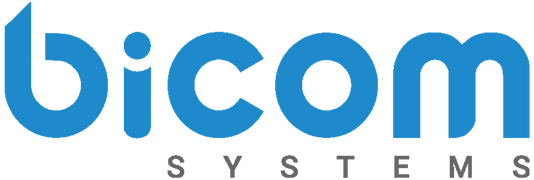Contact centers are a powerful asset for any business, but do not really bring out their full potential unless handled properly.
This is where contact center analytics come into play, powerful tools which help gather useful metrics about every form of interaction and operation within it.
Depending on what the business wants to analyze and potentially improve, sets of different metrics are available to cater to each specific need, though most will revolve around improving CSAT (Customer satisfaction score), customer handle times and SLA performance.
However, a lot of data is present within the contact center itself and businesses need to know what they are looking for or else their analytics will not bear fruit.
But, how do they go about doing that, why is it important for them to do so, and what benefit does it give you? Let us find out.
What Are Contact Center Analytics?
Contact center analytics are specific datasets collected from the sea of data logged within the contact center which helps businesses gain crucial insights into various aspects of their operations surrounding their customers, agents and their product.
These can be anything from average customer handling time and FCR, to the number of missed calls or even tracking individual customer behavior patterns.
This data is gathered from both written sources and call recordings, analyzed, even compared to previously gathered metrics, and then delivered as a report to be presented in a more comprehensive manner.
The business’s managers should be trained to know which exact data should be collected and what for, though most contact center solutions will handle the most common reports automatically.
Modern contact centers make this easier by using machine learning and AI to compile different forms of data into something more comprehensive over dashboards.
Why Are Contact Center Analytics So Important To A Business?
When offering a contact center solution to a business, they need to know the reasoning behind every feature to better understand the product and gauge whether it is of any benefit to them.
Metrics do offer chances for tangible improvement when acted upon, but they will likely want concrete numbers.
According to McKinsey, there are significant benefits for businesses having access to their contact center analytics and using them properly.
It leads to:
- Cutting operational costs by up to $5 million
- Drastically improving conversion rates for sales calls (up to 50% in some cases)
- Improving average customer handling time by up to 40%
- Boosting self-service usage rates by up to 20%
Aside from raw statistical improvements, there are other benefits to it which are harder to precisely quantify since they vary on a case-by-case basis, like:
- Enhancing employee satisfaction and productivity by streamlining their workflow
- Elevating customer satisfaction by improving on further interactions and personalizing their experience
- Identifying common customer problems and updating the IVR service accordingly to expedite query resolution
What Types Of Analytics Are There?
As new technologies and innovations in the field of telephony are discovered and implemented, new types of analytics keep popping up, all aimed at improving the overall service delivered to customers.
To that end, there are numerous different analytics available depending on the chosen provider and the type of data that the business wants to gather and utilize.
Here are some of the most popular analytics groups that businesses would like to have access to in order to improve on their business metrics.
1. Customer Satisfaction And Retention Analytics
The main focus of a contact center’s data analysis will revolve around the topic of customer satisfaction and retention, which is why understanding these analytics is key.
Satisfaction analytics are usually created through surveys taken by customers at the end of an interaction to help gain insights into agent performance from the customer’s point of view, gauge their performance and identify potential pain points that can be improved upon for future interactions.
Customer retention, on the other hand, is measured by keeping track of repeat customers and measuring current customer data with data from a set point in the past, comparing the difference.
This helps businesses better understand what their target audience is and what to focus their brand on, or finding spots where they can refine their customer service level.
2. Interaction Analytics
Recognizing customer behavioral patterns and utilizing them in order to both boost a business’s sales and CSAT scores is an opportunity that interaction analytics open the door toward.
Profiling customers throughout their interactions with a contact center’s agents helps create patterns which can help guide future marketing strategies based on the customer base’s preferences and steering clear from fields that the majority was disinterested in interacting with.
3. Predictive Analytics
Improving for the future is something every business aims to set up for and predictive analytics help them get there by learning from the past.
Contact centers can utilize their existing data to conceptualize future requirements and form plans around them ahead of time.
These are especially crucial during marketing campaigns or other times where customer query volume goes up and would otherwise catch a business off guard and have their agents overwhelmed.
Being able to somewhat predict when these periods are going to occur helps businesses allocate resources better, leading to improved customer handling times at these busy hours and lower risk of customer frustration thanks to properly distributed customer traffic.
That said, while finding some of these patterns can be easy at times, it is still tedious work, but given the growing use of ML and AI in helping categorize and parse data, the process is gradually becoming more automated, allowing businesses to stay on top of things at all times.
4. Omnichannel Analytics
Analyzing a contact center’s customer interactions throughout different communication channels helps further profile the business’s customer base and allows agents to form closer connections to them, providing them with a more personal experience throughout their interactions.
This will help put customers at ease and is likely to get CSAT scores up.
While not every contact center will have omnichannel capabilities, they are likely to utilize at least a portion of the metrics that fall under the omnichannel umbrella.
They are split based on the form of communication used within their own subgroups, but the major ones are:
Speech And Voice Analytics
An essential tool in understanding customer behavior patterns and understanding their problems by tracking how their tone of voice changes throughout a vocal interaction.
This is not just useful for the long term in improving customer interaction strategies, but can be used by managers to detect high stress customer interactions in real time and jump in if need be to assist in resolving the situation.
The longer term benefits of these analytics are present in enriching customer profiles, empowering agents to offer more personal interactions with the business’s customer base by adapting to the individual’s behavioral patterns.
They are also quite useful as training tools for new agents, allowing them to gain insight into the various situations they may find themselves in.
Speech and voice analytics are yet another area where the recent inclusion of machine learning and AI helps recognize specific behavioral patterns and document them to free human resources up and allocate them elsewhere.
Text Analytics
Aside from vocal statistics, there are those that focus on all forms of written customer interaction.
These will track and assess data from SMS, social media, emails, documentation and instant messages and compile them by assigning strength levels to various words and phrases, a process done to accelerate evaluation and recognize behavioral patterns through text.
It is also done to form a set of rules that ML and AI tools can utilize to automate the process with the ultimate goal of more detailed customer profiling to improve future interactions throughout these communication mediums.
Self-service analytics
A set of metrics that can track either vocal or textual self-service interaction depending on which of them are offered by the business (if any), be it IVR, chatbots, AI assistants or anything similar.
Self-service analytics track customer engagement with their automated tools to gauge their efficiency and the customer’s satisfaction regarding them.
This can help detect potential pain points in the offered services, showing what needs to be improved in order to boost customer satisfaction and reduce customer handling time while retaining lower overhead costs that these automation features provide.
5. Contact Center Desktop Analytics
These are analytics that cater to tracking agent efficiency during live calls and check which tools they use while interacting with the customer.
Its main purpose is to find patterns between high-performing agents and the tools that they employ to facilitate their productivity and help standardize some part of them across the entire workforce in a feasible way to boost overall effectiveness.
They are also used to detect low productivity apps that prove to be more of a hindrance than a help to avoid having agents rely on them when better alternatives can be implemented.
Data Is Everything
In order to empower company growth, businesses need to understand the importance of the data and analytics that contact centers collect.
They provide a gateway into the minds of their customers, minds that can change on a whim based on current trends.
Having access to that gateway allows businesses to adapt to these trends ahead of time and keep up, retaining customers while attracting new ones and growing more successful for it by improving their customer experience.
Bicom Systems’ very own Contact Center solution provides businesses with a set of user-friendly analytics that are laid out in a comprehensive manner which is everything that these businesses could ask for.
Be sure to give it a look, or contact us about it for further information.

